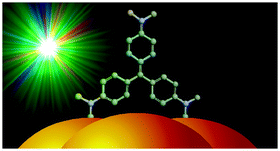Our main objective in this tutorial review is to provide insight into some of the questions surrounding single molecule detection (SMD) using surface-enhanced Raman scattering (SERS) and surface-enhanced resonance Raman scattering (SERRS). Discovered thirty years ago, SERS is now a powerful analytical tool, strongly tied to plasmonics, a field that encompasses and profits from the optical enhancement found in nanostructures that support localized plasmon excitations. The spectrum of the single molecule carries the quantum fingerprints of the system modulated by the molecule–nanostructure interactions and the electronic resonances that may result under laser excitation. This information is embedded in vibrational band parameters. The dynamics and the molecular environment will affect the bandwidth of the observed Raman bands. In addition, the localized surface plasmon resonances (LSPR) empower the nanostructure with a number of optical properties that will also leave their mark on the observed inelastic scattering process. Therefore, controlling size, shape and the formation of the aggregation state (or fractality) of certain metallic nanostructures becomes a main task for experimental SERS/SERRS. This molecule–nanostructure coupling may, inevitably, lead to spectral fluctuations, increase photobleaching or photochemistry. An attempt is made here to guide the interpretation of this wealth of information when approaching the single molecule regime.

You have access to this article
 Please wait while we load your content...
Something went wrong. Try again?
Please wait while we load your content...
Something went wrong. Try again?


 Please wait while we load your content...
Please wait while we load your content...